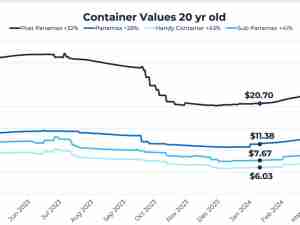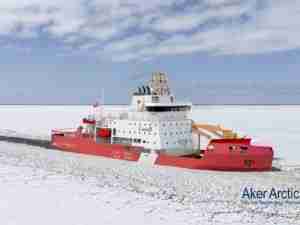By Albert S. Jacquez, SLSDC Administrator
America's economic engine picks up added horsepower when the binational US-Canadian St. Lawrence Seaway officially opened to commercial vessels March 23rd. The world's longest waterway annually accounts for billions of dollars in revenue and sustains tens of thousands of jobs from mariners, agents, longshoremen, freight forwarders, pilots, and terminal operators in eight Great Lakes states and two Canadian provinces.
Opening day of the St. Lawrence Seaway's 2005 navigation season heralds the beginning of a nine-month period of maritime activity along America's northern border. From the beginning of Spring to the onset of winter, thousands of vessels ply the Seaway transporting vital bulk and general cargoes to ports on the St. Lawrence River and throughout the Great Lakes.
The Seaway serves as an important binational marine trade link between North America's agricultural and industrial heartland and world markets. Bulk commodities like iron ore, coal, coke, petroleum goods, stone aggregates, cement, and salt -- building blocks of manufacturing and construction industries -- help move the American economy. For US and Canadian farmers the Seaway provides a cost-effective route for transporting wheat, corn, oats, and soybeans to foreign customers at competitive prices.
Last year the Seaway transported 43 million metric tons of cargo, a six percent increase over the 2003 season. The system can easily handle additional capacity, and the Seaway Corporations are striving to recapture the historical average pace of 53 million tons of cargo. To help sustain the future viability of the system, the Seaway is actively seeking new cargoes and innovative means of moving them.
We are aggressively marketing our System's substantial advantages in a billboard campaign called "Highway H2O" along Highway 401 from Montreal to Windsor. Our message will soon be on the US side as ports like Oswego, Cleveland, Toledo, Burns Harbor, Chicago, Detroit, and Duluth join Canadian counterparts.
Maritime transport moves freight more cheaply per ton/mile than competing surface modes of rail and truck while delivering less harmful air emissions and posting fewer accidents. As more people understand that reducing road congestion is an important quality of life consideration as much as it is a productivity issue, interest in marine transport grows. Seaway-size ships move the equivalent freight of 225 rail cars or 870 fully loaded semi trucks. Moving these products by surface means often results in higher costs.
(Albert S. Jacquez is SLSDC Administrator)








